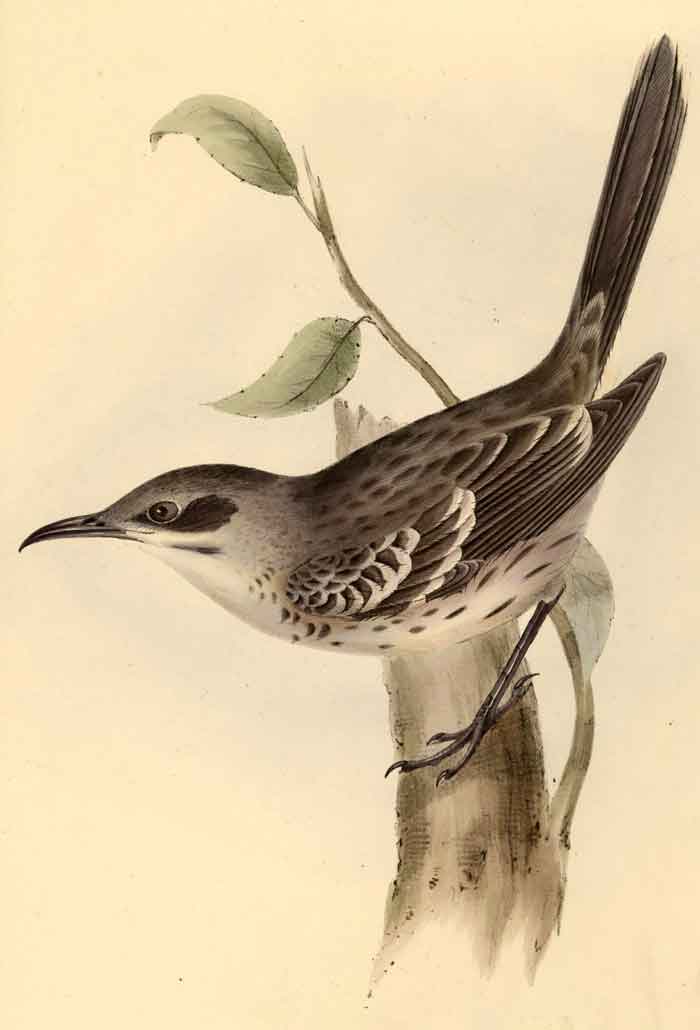
Superregnum: Eukaryota
Cladus: Unikonta
Cladus: Opisthokonta
Cladus: Holozoa
Regnum: Animalia
Subregnum: Eumetazoa
Cladus: Bilateria
Cladus: Nephrozoa
Superphylum: Deuterostomia
Phylum: Chordata
Subphylum: Vertebrata
Infraphylum: Gnathostomata
Megaclassis: Osteichthyes
Cladus: Sarcopterygii
Cladus: Rhipidistia
Cladus: Tetrapodomorpha
Cladus: Eotetrapodiformes
Cladus: Elpistostegalia
Superclassis: Tetrapoda
Cladus: Reptiliomorpha
Cladus: Amniota
Classis: Reptilia
Cladus: Eureptilia
Cladus: Romeriida
Subclassis: Diapsida
Cladus: Sauria
Infraclassis: Archosauromorpha
Cladus: Crurotarsi
Divisio: Archosauria
Cladus: Avemetatarsalia
Cladus: Ornithodira
Subtaxon: Dinosauromorpha
Cladus: Dinosauriformes
Cladus: Dracohors
Cladus: Dinosauria
Cladus: Saurischia
Cladus: Eusaurischia
Subordo: Theropoda
Cladus: Neotheropoda
Cladus: Averostra
Cladus: Tetanurae
Cladus: Avetheropoda
Cladus: Coelurosauria
Cladus: Tyrannoraptora
Cladus: Maniraptoromorpha
Cladus: Maniraptoriformes
Cladus: Maniraptora
Cladus: Pennaraptora
Cladus: Paraves
Cladus: Eumaniraptora
Cladus: Avialae
Infraclassis: Aves
Cladus: Avebrevicauda
Cladus: Pygostylia
Cladus: Ornithothoraces
Cladus: Ornithuromorpha
Cladus: Carinatae
Parvclassis: Neornithes
Cohors: Neognathae
Cladus: Neoaves
Cladus: Telluraves
Cladus: Australaves
Ordo: Passeriformes
Subordo: Passeri
Infraordo: Passerida
Superfamilia: Muscicapoidea
Familia: Mimidae
Genus: Mimus
Species: Mimus melanotis
Name
Mimus melanotis (Gould, 1837)
Synonymy
Orpheus melanotis (protonym)
Nesomimus melanotis
References
Proceedings of the Zoological Society of London Pt5 no.50: 27.
Links
IUCN: Mimus melanotis (Endangered)
Vernacular names
català: Mim de l'illa San Cristóbal
čeština: Drozdec sancristobalský
dansk: San Cristobal-spottedrossel
Deutsch: San-Cristóbal-Spottdrossel
English: San Cristobal Mockingbird
español: Sinsonte de San Cristóbal
suomi: Sancristóbalinmatkija
français: Moqueur de San Cristobal
hrvatski: Prugastokapi raznopojac
magyar: San Cristóbal-szigeti csúfolórigó
italiano: Mimo di San Cristobal
日本語: サンクリストバルマネシツグミ
lietuvių: Sankristobalinis mėgdžiotojas
Nederlands: San-Cristóbalspotlijster
norsk nynorsk: Sancristobalspottefugl
norsk: Sancristobalspottefugl
polski: Przedrzeźniacz plamisty
slovenčina: Spevák ostrovný
svenska: Sancristóbalhärmtrast
українська: Пересмішник сан-кристобальський
The San Cristóbal mockingbird (Mimus melanotis) or Chatham mockingbird, is a species of bird in the family Mimidae. It is endemic to San Cristóbal Island in the Galápagos Islands.[2][3]
Taxonomy and systematics
The San Cristóbal mockingbird, Galápagos mockingbird (Mimus parvulus), Espanola mockingbird (M. macdonaldi), and Floreana mockingbird (M. trifasciatus) were previously placed in genus Nesomimus and were considered conspecific. They now form a superspecies. The San Cristóbal mockingbird is monotypic.[4][2]
Description
Illustration by John Gould (1839)
The San Cristóbal mockingbird is 25 to 26 cm (9.8 to 10.2 in) long. Males weigh an average of 53.2 g (1.88 oz) and females 48 g (1.7 oz). Adults have a thin white supercilium, black lores, and a blackish patch behind the eye. Their crown and upperparts are grayish brown with some darker streaks. The wings and tail are dark brown; the wings when folded show two whitish bars and the outer tail feathers have whitish tips. They are mostly whitish below, with a buffy tinge on the throat, tiny dark spots on the sides of the breast, and blackish brown streaks on the flanks. The juvenile is similar to the adults but with more streaking on its underparts.[5]
Distribution and habitat
The San Cristóbal mockingbird is found only on San Cristóbal Island in the eastern Galápagos. It inhabits several landscapes across all elevations of the island including coastal mangroves, open arid lowland scrub, scrubby woodland with scattered trees and cacti, and some taller woodlands. It shuns dense lowland forest, tall wet woodland, and grassland.[5]
Behavior
Feeding
The San Cristóbal mockingbird mostly forages on the ground for terrestrial arthropods but also takes fruits and berries from low vegetation. It has been documented taking ticks from marine iguanas.[5]
Display
Although the San Cristóbal mockingbird does not have white wing patches, it does a "wing flash" movement similar to that done by Mimus mockingbirds that do have such patches. It runs a short distance, briefly opens its wings to two-thirds of full extension, then extends them fully to a position just above horizontal.[6]
Breeding
The San Cristóbal mockingbird nests from January to April at low elevations and to later at higher ones. Its year round territory is typically 3 to 5 ha (7.4 to 12.4 acres). The species builds a bulky nest of twigs lined with grasses in the crotch of a tree, usually 4 to 5 m (13 to 16 ft) above the ground. The clutch size is two to five, though usually four. The female incubates the eggs and both parents feed nestlings.[5]
Vocalization
Dickcissel male perched on a metal pole singing, with neck stretched and beak open.
Songs and calls
Listen to San Cristóbal mockingbird on xeno-canto
The San Cristbal mockingbird sings a "[l]oud, melodious and disjointed territorial song typical of [its] genus."[5]
Status
The IUCN has assessed the San Cristóbal mockingbird as Near Threatened. Prior to 2020 it was classified as Endangered. "The population is moderately small, but stable and currently not under imminent threat." The population is estimated to be at least 20,000 mature individuals.[1]
See also
Galápagos mockingbird
Floreana mockingbird
Española mockingbird
References
BirdLife International (2020). "Mimus melanotis". IUCN Red List of Threatened Species. 2020: e.T22711078A180990415. doi:10.2305/IUCN.UK.2020-3.RLTS.T22711078A180990415.en. Retrieved 17 November 2021.
Gill, F.; Donsker, D.; Rasmussen, P. (July 2021). "IOC World Bird List (v 11.2)". Retrieved July 14, 2021.
Clements, J. F., T. S. Schulenberg, M. J. Iliff, S. M. Billerman, T. A. Fredericks, B. L. Sullivan, and C. L. Wood. 2019. The eBird/Clements Checklist of Birds of the World: v2019. Downloaded from https://www.birds.cornell.edu/clementschecklist/download/ Retrieved August 15, 2019
Remsen, J. V., Jr., J. I. Areta, E. Bonaccorso, S. Claramunt, A. Jaramillo, D. F. Lane, J. F. Pacheco, M. B. Robbins, F. G. Stiles, and K. J. Zimmer. Version 23 May 2021. A classification of the bird species of South America. American Ornithological Society. https://www.museum.lsu.edu/~Remsen/SACCBaseline.htm retrieved May 24, 2021
Cody, M. L. and C. J. Sharpe (2020). San Cristobal Mockingbird (Mimus melanotis), version 1.0. In Birds of the World (J. del Hoyo, A. Elliott, J. Sargatal, D. A. Christie, and E. de Juana, Editors). Cornell Lab of Ornithology, Ithaca, NY, USA. https://doi.org/10.2173/bow.chamoc2.01 retrieved July 24, 2021
Hundley, Margaret H. "Wing-flashing in the Galápagos Mockingbird" (PDF). The Auk. 80 (3): 372.
Retrieved from "http://en.wikipedia.org/"
All text is available under the terms of the GNU Free Documentation License

